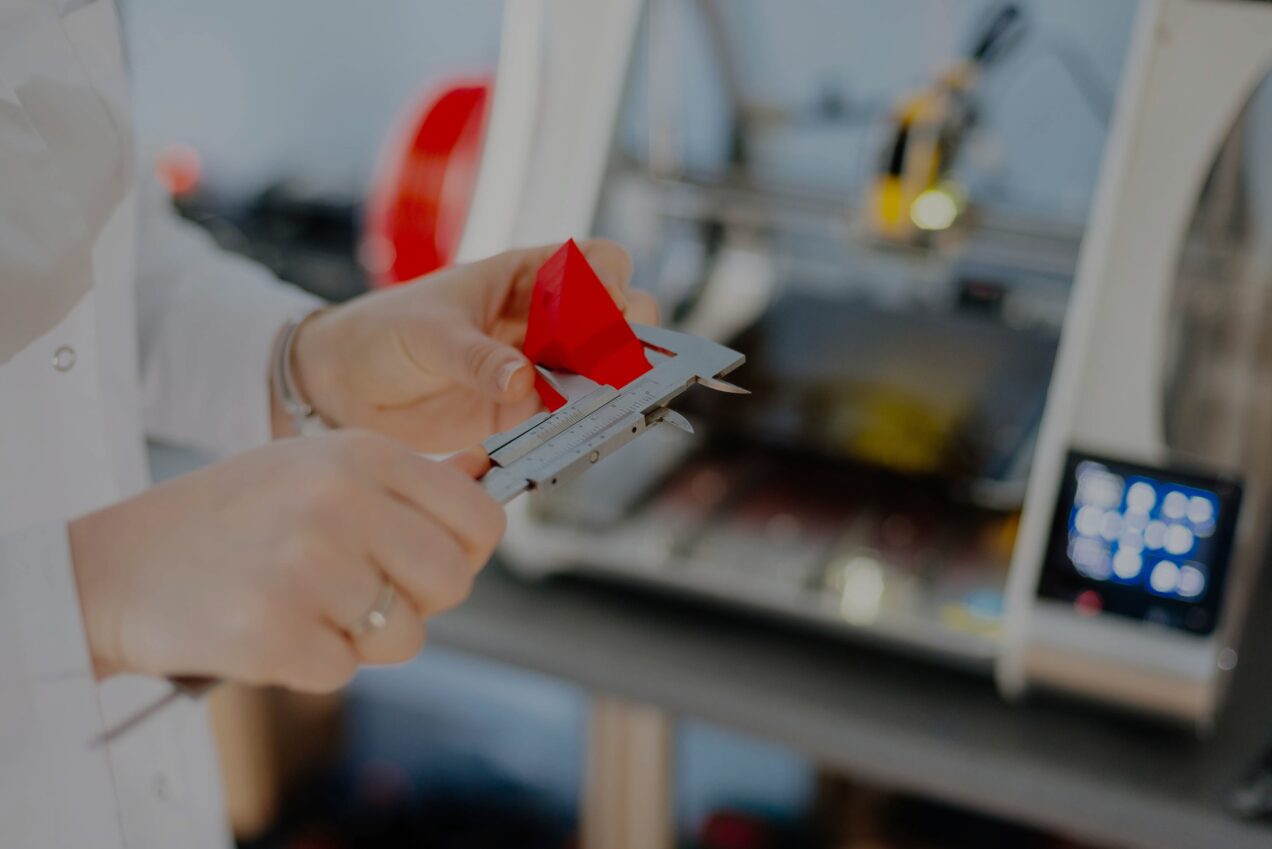

Originally published on fastradius.com on March 10, 2021
Dimensional tolerance design is crucial to creating components that fit together well and function properly. Overly “loose” tolerances yield too much manufacturing allowance, leading to mismeasured (and therefore often unusable parts — however, needlessly “tight” tolerances demand precision that may drive increases in cost, lead time, and complexity.
Mastering the process of designing for part tolerances can help ensure that:
There are many elements to consider when designing a component’s dimensional tolerance. Every step of the manufacturing process must be accounted for because everything from the material used to the order of assembly could contribute to part tolerance.
Dimensional tolerances help engineers understand the margin of manufacturing error that a component can face before becoming unusable. Tolerances are often measured in X, Y, and Z dimensions, but can be applied to any element, such as surface roughness and external temperature. A “fit” is a kind of tolerance that determines how components will fit into one another, such as a shaft fitting into a hole.
You can best determine dimensional tolerances and fits by taking the time to deeply consider each and every element of your component. Consider all the possibilities of a given part and how application-related factors, environmental factors, materials, and more might influence the part’s tolerance. Also, be sure to consider how a certain component’s manufacturing processes could affect the tightness or looseness of its tolerances.
Optimizing your dimensional tolerances will entail striking a desirable balance between performance and cost-effectiveness. Here are some suggestions to keep in mind while designing manufacturing tolerances:
Different manufacturing methods require — and be capable of achieving — different tolerances. Always adhere to design for manufacturability (DFM) best practices to ensure that part design is not only optimized for its end-use, but well-suited for the given manufacturing method.
Different types of materials have differing levels of accuracy, consistency, and shrinkage rates. For example, brass is highly weldable but quite susceptible to stress corrosion cracking. Use a material selection chart and consult your manufacturer in order to select a best-fit material that will meet project requirements and suit all of your tolerances.
Tolerance stacking is the accumulation of tolerance over multiple related tolerances. If not taken into account, the buildup of many smaller tolerances may make it impossible to assemble two mating components.
An irregular manufacturing environment will result in more naturally occurring variation. To minimize deviation between components, ensure the manufacturing facility where your parts will be made meets regulatory standards and does not suffer from major fluctuations in temperature or humidity, which could impact manufacturing and part performance. Even more importantly, consider part applications and end-use environmental factors to assess potential degradation, discoloration, deformation, and more.
A radius’s tolerance will double when measured as a diameter, so it may accidentally be looser or tighter than intended if its measurements are not properly checked. Ensure accuracy by treating dimensional tolerances as if they were continued zeroes, even if they are not.
Here are three common mistakes designers and engineers make when designing tolerances — and how to avoid them:
Considering tolerances at the beginning of the product development process can prevent time-consuming, costly redesigns. If you adjust for a part’s specifications early on, you can accelerate production speed and time-to-market — especially if you enlist the help of an expert manufacturer like SyBridge, who can work alongside you to optimize tolerances from day one.
Balancing your tolerances is one of the most difficult aspects of tolerance design. With overly loose tolerances, it’s likely that many components will arrive misaligned and possibly dysfunctional. On the other hand, designing dimensional tolerances too tightly will unnecessarily increase manufacturing, material, and labor costs, which could cost you precious time and money.
If you leave out dimensional tolerances, your manufacturer will either assign their own tolerances or place a standard ±0.005 in. tolerance on the part. This will likely result in improperly sized pieces, which then have to be remanufactured correctly using proper tolerances.
Following tolerancing regulations and guidelines offer parameters that help ensure you will design proper tolerances every time. These requirements and best practices — some of which are outlined below — can help you find the standard tolerance for a given part, discover formulas to aid the tolerance creation process, and properly account for all materials and production elements of a component.
Turn to these resources to ensure your tolerances are appropriate and compliant. Utilizing these tools could help prevent mismeasured tolerances, as well as offer further insight and understanding into the process of forming dimensional tolerances.
Creating dimensional tolerances can be challenging, but employing proper foresight, tools, and tolerancing processes can help you design balanced tolerances that help ensure the long-term performance of your parts. However, defining tolerances requires assessing a range of complex factors — and can prove challenging, even for the most experienced product development teams. To rest assured that every part is well-toleranced and high-performing, consider teaming with a trusted manufacturing partner.
A leading on-demand digital manufacturer, SyBridge helps you optimize dimensional tolerances in accordance with your chosen manufacturing method, materials, timeline, budget, relevant regulations, and unique project requirements. With a team of seasoned engineers, designers, and advisors, SyBridge offers expert services ranging from design and prototype optimization to production and fulfillment. Contact us today. Let’s make your vision a reality.
Forget typical cycle times. We're pushing the boundaries of conformal cooling. While traditional approaches deliver…
Forget typical cycle times. We're pushing the boundaries of conformal cooling. While traditional approaches deliver…
From left to right: Brayden Janak (apprentice); Logan Vifaquain (CNC machining, Programming and CMM); Ron…
SyBridge Technologies is proud to announce we have been awarded the 2023 General Motors Supplier…
Today, designers and engineers are accustomed to working with digital tools in their day-to-day jobs.…
Optimizing Your Injection Molding Process for Cost-Effective Manufacturing Excellence In today’s competitive landscape, manufacturers are…